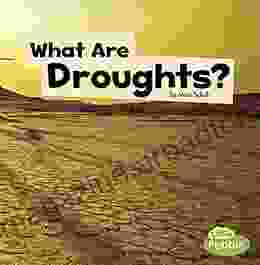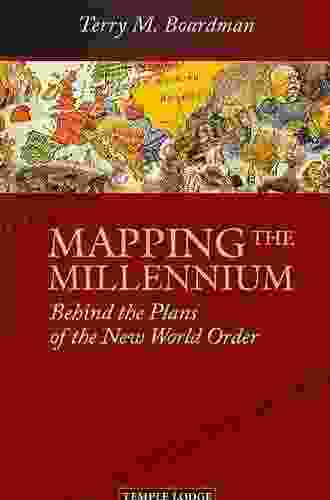Droughts: Nature's Cruel Hand

The Silent Killer of Ecosystems and Civilizations
In the unforgiving grip of droughts, life withers, and hope fades. These insidious weather events, often overlooked in the face of more dramatic disasters, wreak havoc on ecosystems and civilizations alike.
What are droughts, and why are they so devastating? Droughts occur when a region receives significantly less rainfall than normal over an extended period, typically several months or years. This lack of precipitation disrupts the delicate balance of water availability, leading to a cascade of catastrophic consequences.
Causes of Droughts
The causes of droughts are complex and varied. Natural factors, such as changes in atmospheric circulation patterns, El Niño-Southern Oscillation (ENSO),and global climate change, can all contribute to the onset of droughts.
Human activities also play a role. Overextraction of groundwater for irrigation, deforestation, and urbanization can exacerbate the effects of droughts by reducing water availability and altering the climate.
Consequences of Droughts
The consequences of droughts are wide-ranging and devastating. Water scarcity is the most immediate impact, affecting drinking water supplies, irrigation for agriculture, and industrial processes.
Droughts also cause crop failures, leading to food shortages and famine. In extreme cases, droughts can trigger population displacement and conflict as people seek food and water elsewhere.
Ecosystems are particularly vulnerable to droughts. Reduced water availability disrupts plant and animal life, causing habitat loss, species extinctions, and ecosystem collapse.
Adaptations to Droughts
Despite the challenges posed by droughts, human societies have developed various strategies to adapt and mitigate their impacts. These adaptations include:
- Water conservation measures, such as drip irrigation and rainwater harvesting
- Crop diversification and drought-resistant crop varieties
- Drought monitoring and early warning systems
- Water storage and distribution infrastructure
- Policy changes to promote water conservation and sustainable land use
Droughts are a formidable force of nature, capable of devastating ecosystems, civilizations, and human lives. Understanding the causes, consequences, and adaptations to droughts is crucial for mitigating their impacts and building resilient societies.
As climate change intensifies, droughts are likely to become more frequent and severe. It is imperative that we invest in drought resilience measures to protect our water resources, food supplies, and ecosystems from the cruel hand of droughts.
Do you want to contribute by writing guest posts on this blog?
Please contact us and send us a resume of previous articles that you have written.
 Book
Book Novel
Novel Page
Page Chapter
Chapter Text
Text Story
Story Genre
Genre Reader
Reader Library
Library Paperback
Paperback E-book
E-book Magazine
Magazine Newspaper
Newspaper Paragraph
Paragraph Sentence
Sentence Bookmark
Bookmark Shelf
Shelf Glossary
Glossary Bibliography
Bibliography Foreword
Foreword Preface
Preface Synopsis
Synopsis Annotation
Annotation Footnote
Footnote Manuscript
Manuscript Scroll
Scroll Codex
Codex Tome
Tome Bestseller
Bestseller Classics
Classics Library card
Library card Narrative
Narrative Biography
Biography Autobiography
Autobiography Memoir
Memoir Reference
Reference Encyclopedia
Encyclopedia John Head
John Head Kimberly Ridley
Kimberly Ridley Wendy Jackson
Wendy Jackson Karrie Lynn Pennington
Karrie Lynn Pennington Keith Coaley
Keith Coaley Stacey Joyful
Stacey Joyful Kevin Courrier
Kevin Courrier Peter Piven
Peter Piven Tom Wells
Tom Wells Kevin Kali
Kevin Kali Keith Thompson
Keith Thompson Molly Devine Rd
Molly Devine Rd Katie Kendrick
Katie Kendrick Vitaly Ostapetz
Vitaly Ostapetz Kathleen Duey
Kathleen Duey Wayne Hoffman
Wayne Hoffman Kade Young
Kade Young Ken Klein
Ken Klein Stephanie Y Evans
Stephanie Y Evans Roger Daltrey
Roger Daltrey
Light bulbAdvertise smarter! Our strategic ad space ensures maximum exposure. Reserve your spot today!

 Corbin PowellUnlock the Secrets of Larry Lewis: The Ultimate Guide to Debts, Loans, and...
Corbin PowellUnlock the Secrets of Larry Lewis: The Ultimate Guide to Debts, Loans, and... Pat MitchellFollow ·2.2k
Pat MitchellFollow ·2.2k Richard SimmonsFollow ·10k
Richard SimmonsFollow ·10k Jaime MitchellFollow ·4.6k
Jaime MitchellFollow ·4.6k Jeffery BellFollow ·17.9k
Jeffery BellFollow ·17.9k Davion PowellFollow ·3.7k
Davion PowellFollow ·3.7k Charlie ScottFollow ·2.9k
Charlie ScottFollow ·2.9k Jules VerneFollow ·10.1k
Jules VerneFollow ·10.1k Russell MitchellFollow ·8.2k
Russell MitchellFollow ·8.2k

 Francis Turner
Francis TurnerLearn to Make the Perfect Tapas Dishes Through the...
If you're looking to...

 Victor Turner
Victor TurnerUnlock the Secrets of Publishing Law: A Comprehensive...
Embark on a literary journey where the...

 Casey Bell
Casey BellHealing Crystals: Essential Crystals for Beginners
Unveiling the Mystical...

 Nick Turner
Nick TurnerOne Hundred Years of Fire Insurance: A History of...
Chapter 1: The...














